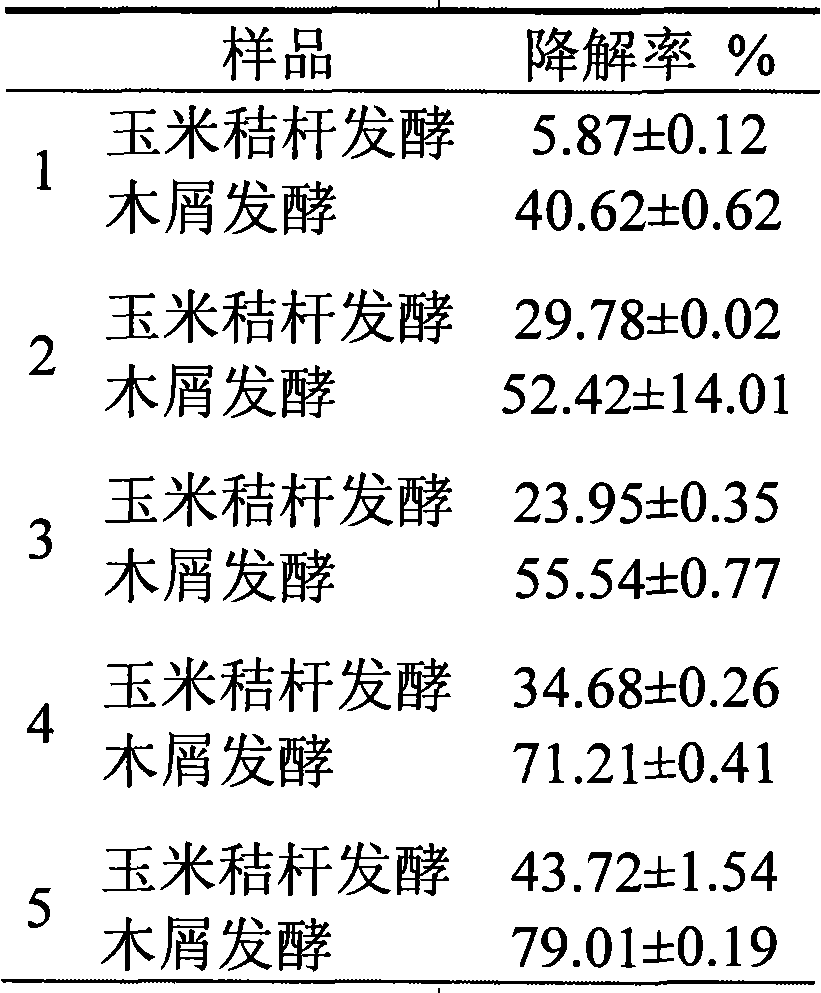Ecological pig-raising method
An ecological pig raising and pig house technology, applied in animal houses, biological sludge treatment, animal feed, etc., can solve the problems of many antibacterial drugs, increase feeding costs, waste water resources, etc., and achieve high protein degradation rate , Improve feed utilization and reduce labor costs
- Summary
- Abstract
- Description
- Claims
- Application Information
AI Technical Summary
Problems solved by technology
Method used
Image
Examples
Embodiment 1
[0033] 1) Collection of indigenous microorganisms and production of fermentation broth
[0034] In spring, put 1.5 kg of rice into a square wooden box with a side length of 20 cm and a height of 10 cm, cover it with rice paper, tie it with a rope, and bury it in the humus soil in the pine forest. After 7-8 days of fermentation, the rice It is covered with white colonies, and it is in the shape of mud. Take out the rice, add 0.8kg of brown sugar, mix well, put it into a jar, seal it with rice paper, and ferment it at 18°C to 19°C for 4 to 5 days. When it basically becomes liquid, it is the stock solution of indigenous microorganisms. Dilute the stock solution 500 times with water to be a fermented liquid, take 20 kg of the fermented liquid, and set aside;
[0035] 2) Production of organic litter
[0036] will be 5m 3 Sawdust, 3m 3 cornstalk flour, 1m 3 rice bran, 0.9m 3 Clean soil (that is, no chemical fertilizer or pesticide pollution), 10kg of amino acid aqueous solut...
Embodiment 2
[0042] 1) Collection of indigenous microorganisms and production of fermentation broth
[0043] In summer, put 1kg of rice into a rectangular wooden box with a side length of 20cm×18cm, cover it with rice paper and tie it with a rope, and bury it in the humus soil of the oak forest. After 5 days of fermentation, the rice is covered with white mycelium , The rice is in the form of muddy mud, take it out and mix well with 0.5kg of brown sugar, put it into a jar with a certain volume, seal it with rice paper, and place it at 19°C to 20°C to continue fermentation. After 5 days, when the content of the altar was basically in a liquid state, take it out as the stock solution of indigenous bacteria microorganisms. Dilute the stock solution 400 times with water to make a fermented liquid, and take 27 kg of the fermented liquid. spare
[0044] 2) Production of organic litter
[0045] will be 13.5m 3 Sawdust, 1.4m 3 Shanpi soil (without chemical fertilizer and pesticide pollution),...
PUM
 Login to View More
Login to View More Abstract
Description
Claims
Application Information
 Login to View More
Login to View More - R&D
- Intellectual Property
- Life Sciences
- Materials
- Tech Scout
- Unparalleled Data Quality
- Higher Quality Content
- 60% Fewer Hallucinations
Browse by: Latest US Patents, China's latest patents, Technical Efficacy Thesaurus, Application Domain, Technology Topic, Popular Technical Reports.
© 2025 PatSnap. All rights reserved.Legal|Privacy policy|Modern Slavery Act Transparency Statement|Sitemap|About US| Contact US: help@patsnap.com

